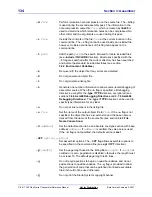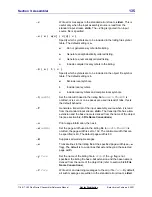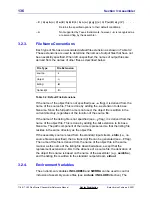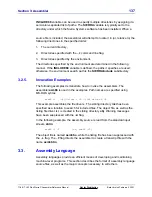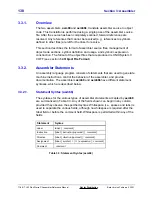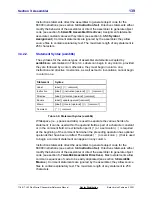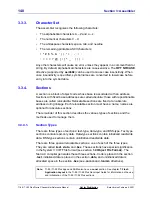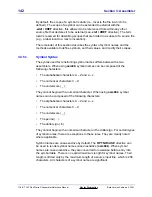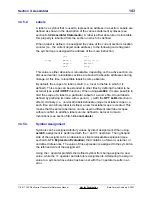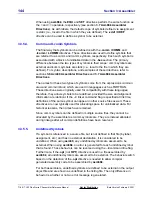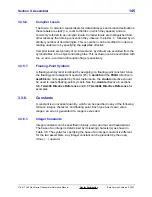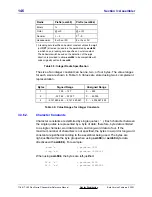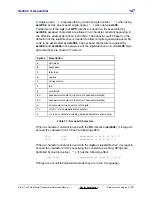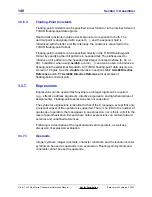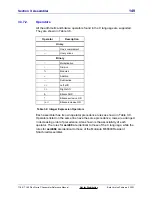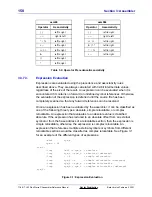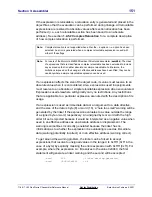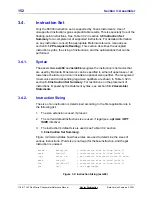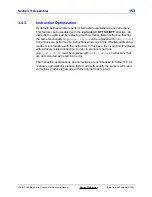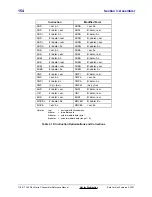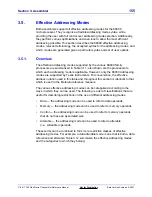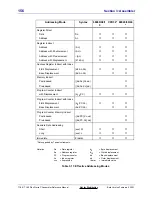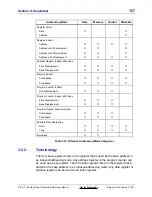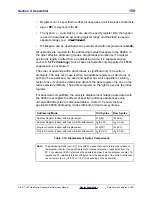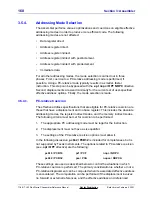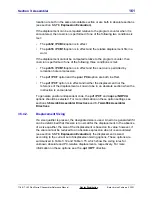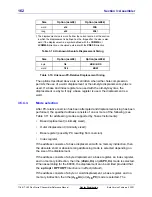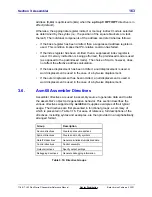
148
Section 3: Assembler
TI
-
89 / TI
-
92 Plus Sierra C Assembler Reference Manual
Not for Distribution
Beta Version February 2, 2001
3.3.6.3. Floating-Point
Constants
Floating-point constants can be specified in real format or in the internal format of
TI BCD floating-point data objects.
Real format constants include a decimal point or an exponent or both. The
decimal point is designated with a period ( . ), and the exponent field is
introduced with the letter e (or E). Internally, the constant is converted to the
TI BCD floating-point format.
Floating-point constants can be specified directly in the TI BCD floating-point
format by specifying their bit patterns in hexadecimal. The prefixes used to
introduce a bit pattern are the hexadecimal integer constant prefixes ($, 0x, or
0X). In addition, when using asm68, a colon ( : ) can also be used to introduce a
floating-point hexadecimal bit pattern. All TI BCD floating-point data objects are
stored in 10 bytes. See the .double directive in sections 3.6.7 Asm68 Directive
Reference and 3.7.7 Asm68k Directive Reference for examples of
floating-point constant entry.
3.3.7. Expressions
Expressions can be used almost anywhere an integer argument is required
(e.g., effective address arguments, directive arguments, and right-hand sides of
assignments). Floating-point expressions are not supported.
The syntax for expressions is identical to that of the C language, except that only
a relevant subset of the operators is supported. There is no limit to the number of
operands or operators that can appear in an expression, nor is there a limit to the
level of parenthesization. Except where noted, expressions can contain forward,
external, and undefined references.
Following is a description of the legal operands and operators, as well as a
discussion of expression evaluation.
3.3.7.1. Operands
Integer symbols, integer constants, character constants, and the location counter
symbol can be used as operands in an expression. Floating-point symbols and
constants cannot be used as operands.

